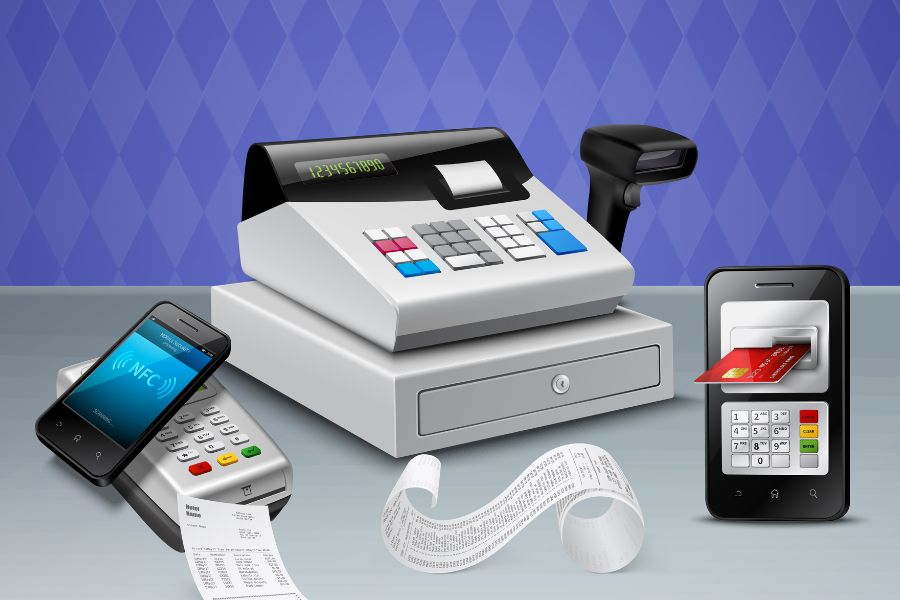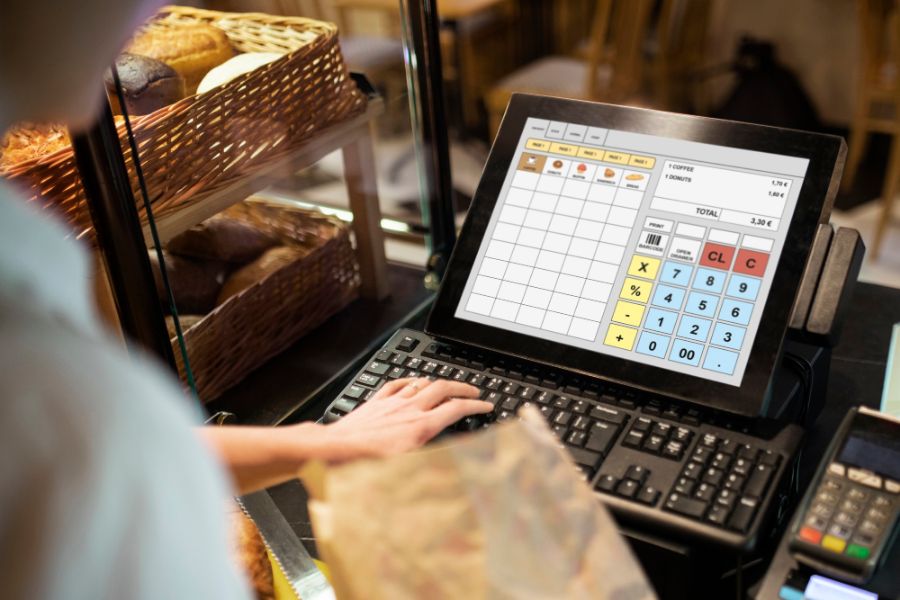In the ever-changing field of digital commerce, staying ahead involves more than just keeping up; it necessitates a proactive approach that values adaptability, agility, and creativity. As organizations attempt to match the changing demands and preferences of modern consumers, classic monolithic e-commerce systems are rapidly proving to be unsuitable for the contemporary landscape. Enter Composable commerce, a novel paradigm that enables organizations to design digital transaction experiences with unprecedented flexibility and modularity. It is highly regarded among e-commerce professionals with 95% of them considering this new commerce architecture to be the future of the industry and businesses should be taking up this approach. It is forecasted that by the end of 2024, 70% of large and medium-sized enterprises will impose composability as a key requirement for new application planning, and retailers should act fast in order to keep up with the market. In this comprehensive review, we delve into the transformative potential of migrating to Composable commerce, exploring its key benefits, implementation strategies, and the path to unlocking next-generation success in the competitive e-commerce arena.
Why do you need to migrate to Composable commerce?
The current state of e-commerce
Firstly we have to take a look at some rapidly evolving trends in the e-commerce industry:
Omni-channel growth:
- 73% of retail customers shop omni-channel
- Businesses who can interact with omni-channel customers may boost sales revenue by 179% compared to businesses who can’t
- Omni-channel retailers have a 30% higher lifetime ROI and retain 91% more customers
Personalization:
- More than half of global consumers have strong preference for goods/services that are personalized to them, creating a mega-trend of personalization in the world
Because of the global trend in omni-channel operation and personalization, Composable commerce materialized and slowly became prominent in the e-commerce landscape. It was first defined by Gartner in their own research paper “Composable Commerce Must Be Adopted for the Future of Application” in 2020 as a future approach that can easily provide connected, distinctive experiences across multiple channels that are tailor-made for customers. Composable commerce is a component-based, cloud-native and tech-agonistic solution design approach that combines best-of-breed Packaged Business Capabilities (PBCs). It can easily provide flexibility and freedom to build and operate distinguished shopping experiences for customers because of the fact that the different components of the system can be hand-picked and customized to match the business requirements and customer’s demand
PBCs (Packaged Business Capabilities) are software components of well-defined business capabilities that are a bounded collection of data schema, services, APOs and event channels. PBCs are designed to be used as component elements in application product suites and personalized application experiences. Because of the individuality in structuring, any alterations or expansions in any component or PBCs can be done seamlessly and will not affect the overall operation of the system.
Composable commerce makes implementing innovative technologies like AI and third-party plugins into your tech stack much more simple as it allows businesses to implement and test their application without intervening with regular business practices since the system is broken down into small components and not tightly compacted together. As a result, it is firmly positioned as the next-generation commerce architecture and migration to Composable commerce is one of the major trends that can greatly augment a company’s commerce structure
Composable commerce vs Legacy commerce vs Headless commerce
To fully grasp the critical significance of Composable commerce in this next generation of e-commerce, we need to understand the existing commerce structures: monolithic, headless, and Composable and how they compare to one another.
| Monolithic (Early 2000s) | Headless (Early 2010s) | Composable (Early 2020s) | |
| Definition | An integrated system with tightly coupled components, offering a pre-packaged software stack | A system that separates the frontend components (the customer-facing layer) and backend components (the offered e-commerce backend engine processing) | A system that can be broken down into distinct components that can be independently pluggable, customisable, and even interchangeable with your own tech stack |
Overall, looking at how the structures are made, the monolithic structure is more rigid, while both Headless and Composable commerce is related to the MACH architecture, hence more flexible, agile, and scalable. The MACH architecture encourages the use of Microservices to break down complex systems into smaller, independently deployable units, an API-first approach to allow for seamless integration between different components, Cloud-native infrastructure for scalability and reliability regardless of location, and a Headless approach to separate the presentation layer from core functionality. Headless commerce is a smaller part of MACH architecture, while Composable commerce utilizes MACH as a technological backbone to deliver its component-based and best-of-breed approach. As a result, migrating to Composable commerce will help businesses to take advantage of the innovation it provides and stay ahead in the highly competitive market.
Composable commerce migration advantages
In the real-world context, migrating to Composable commerce can give an abundance of benefits to retailers looking to expand their online presence and respond to changing market dynamics. Here are several notable gains, with real-world examples, why your company should consider migrating to Composable commerce:
- Flexibility and Agility
Composable commerce enables organizations to respond swiftly to shifting market trends, client preferences, and emerging technology through the modular nature that allows quicker development and deployment cycles. This adaptability is essential in today’s fast-paced and changing business climate as it allows more effective adaptation to future technological advancements and changes in the e-commerce landscape. The cloud-based nature also allows businesses to be more flexible in terms of location and data management as the system is not dependent on any physical infrastructure. According to Gartner – a major e-commerce research institution, organizations that have migrated to Composable commerce will outpace competitors by 80% regarding the implementation of new features
- Scalability
Composable architecture provides seamless scalability, allowing businesses to simply add or replace components as their operations expand. This scalability is critical for handling growing traffic, extending product lines, and adapting to changing company needs.
Case study: Woolworth sought to grab the rapidly developing on-demand grocery delivery business, which is predicted to see a significant compound annual growth rate (CAGR) of 12.74% between 2024 and 2028. It effectively improved its e-commerce software stack by strategically harnessing the features of commercetools Composable Commerce (available through the Google Cloud Marketplace). With Google Cloud, Algolia, Contentful, and Cybersource, the supermarket giant enabled the rapid integration of iOS and Android shopping channels quickly. Google Cloud supplies scalable and resilient cloud-native Composable commerce architecture that helped Woolworths to effectively manage the increased demand generated by mobile shopping channels. It only took Woolworth 4 months to add a new online delivery channel and 5 months to roll out the new channel to 30 stores.
- Customization
Businesses can tailor their digital commerce experiences to individual customers’ needs and interests. With Composable commerce, you can choose and combine the components that match your individual business goals while also being best-in-class in the industry, resulting in the most tailored and distinctive consumer experience possible.
- Innovation
Embracing Composable commerce fosters innovation by allowing businesses to experiment with new technologies and services. This can lead to the rapid implementation of cutting-edge features, enhancing the overall customer experience and maintaining a competitive edge.
Case study: SPORT 24 utilized a legacy commerce structure provided by Magento, however, in the sporting equipment retail industry, the company realized that unique customer experiences were the key to success, especially in seasonal and holiday online sales peak that required non-stop promotional strategy and unique, tailored customer experience. With a Composable solution in place that consists of Contentful for CMS and Next.js to craft unique digital storefronts based on the Composable solution by commercetools, SPORT 24 profited from the increased flexibility and scalability it provided. As a result, it is now possible to develop one-of-a-kind promotions using flexible data models that allow for customizable pricing and campaign types across multiple seasonal events, resulting in increased revenue and growth , specifically, an increase by 14% for order conversion and 13% for average order value. The company also has a flexible enough technological stack to implement and test innovations like generative AI to further augment customer experience.
How to successfully migrate to Composable commerce
Before migrating to Composable commerce, it is critical to undertake a full review of your business requirements, technical capabilities, and the potential influence on your overall operations, as well as selecting the best approach to move from legacy to Composable commerce.
Criteria for composable commerce migration
- Digital Maturity
Organizations need to assess their current technological infrastructure and capabilities. Digital maturity involves evaluating the effectiveness of existing systems, applications, and platforms. Businesses with outdated or rigid technology stacks may find themselves facing challenges in adapting to new market trends, consumer preferences, and emerging technologies.
- Business Complexity
As businesses grow, their operational and technical needs become more complex. It’s important to consider and plan for how your business would account for more locales, channels, product types, and revenue models as well as the acquisition of new banners and in-store technologies.
- Business Directions
Business environments are dynamic, and organizations must be prepared to adapt to changing market conditions, regulations, and consumer behaviors. Businesses need to clearly define what are the future opportunities for their brand and how can the whole business adapt to this new systematic change.
Approach to migrate to Composable commerce
- Strangler Pattern approach
The Strangler Pattern is a software development and migration strategy often used when transitioning from a monolithic system to a more modular, microservices-based architecture. This pattern is particularly relevant when considering a migration to Composable commerce. In a software context, it involves incrementally replacing or augmenting components of an existing system with new, modern ones through a gradual process, causing the monolith to naturally disappear over time. Because of this staged approach, Strangler Pattern reduces major migration risk and enables a learning-by-trial process that allows businesses to slowly but surely optimize their commerce structure.
- Big Bang approach
Big Bang refers to an entire reconstruction of your commerce architecture and going-live at a single point in time. Experts at various e-commerce platforms and the clients themselves usually prefer the Strangler pattern; however, the Big Bang approach can be situationally beneficial as it is more convenient when dealing with systems that are difficult to break down like Salesforce or SAP Commerce Cloud.
Composable Commerce migration routes
Given that diverse industries and firms have particular challenges, standards, and roadmaps, below are two general pathways proposed by commercetools that enterprises can take to effectively move to Composable Commerce with Strangler pattern approach
Pathway 1: Start with a pilot project or MVP
If your business has just acquired new business units or made expansion into new locations but the system has not integrated them yet due to high onboarding costs and monolithic infrastructure constraints, it is recommended that starting with a Composable method for new units as a pilot project is more convenient because of how cost efficiency and flexible it is.
Pathway 2: Start with the frontend (front-to-back)
Businesses can strive to detach the frontend first and transition to a fully headless frontend solution, followed by the development of an API layer and a gradual backend transfer. This gradual, staged procedure reduces risk and downtime while delivering instant rewards in terms of consumer engagement. This strategy is appropriate for enterprises that use custom and/or legacy frontend solutions, such as SAP Spartacus.
Why POS integration is critical for Composable commerce migration
A POS system consists of many features that are critical to an e-commerce business like operation management, customer management, inventory management, etc., and can make–or-break the consistency and innovation in omni-channel e-commerce experience. As stated above, Composable commerce is a component-based structure, hence it is critical for a POS system to also be API-first and can easily integrate with other components of Composable commerce to create a harmonious commerce ecosystem. As a result, it’s important to consider a new, innovative POS system that can seamlessly integrate with that broader digital commerce ecosystem and also fits within the MACH architecture that is the backbone of Composable commerce. Moreover, when transitioning to a Composable commerce structure, the platforms and support provided by major e-commerce platforms such as BigCommerce and commercetools are critical to the success of the migration. So, a POS system that can work seamlessly with the e-commerce platforms also possesses critical advantages compared to others.
Among the current POS systems, ConnectPOS is a prominent POS system that has successfully implemented the MACH structure and become the leading Point-of-sale solution for commercetools retailers. ConnectPOS positions itself as a next-gen POS, powered by MACH architecture to overcome all the challenges posed by a monolithic POS system and provide a seamless, tailor-made customer experience across all channels. Additionally, with commercetools also being at the forefront of Composable commerce solutions recognized by e-commerce industry research organizations like Gartner, Forrester, IDC; ConnectPOS is also the most suitable POS system for companies looking for the most innovative Composable commerce migration provided by the e-commerce platform. Contact us now to explore more about ConnectPOS and how it can supercharge your Composable commerce migration process
ConnectPOS is a all-in-one point of sale solution tailored to meet your eCommerce POS needs, streamline business operations, boost sales, and enhance customer experience in diverse industries. We offer custom POS with features, pricing, and plans to suit your unique business requirements.



